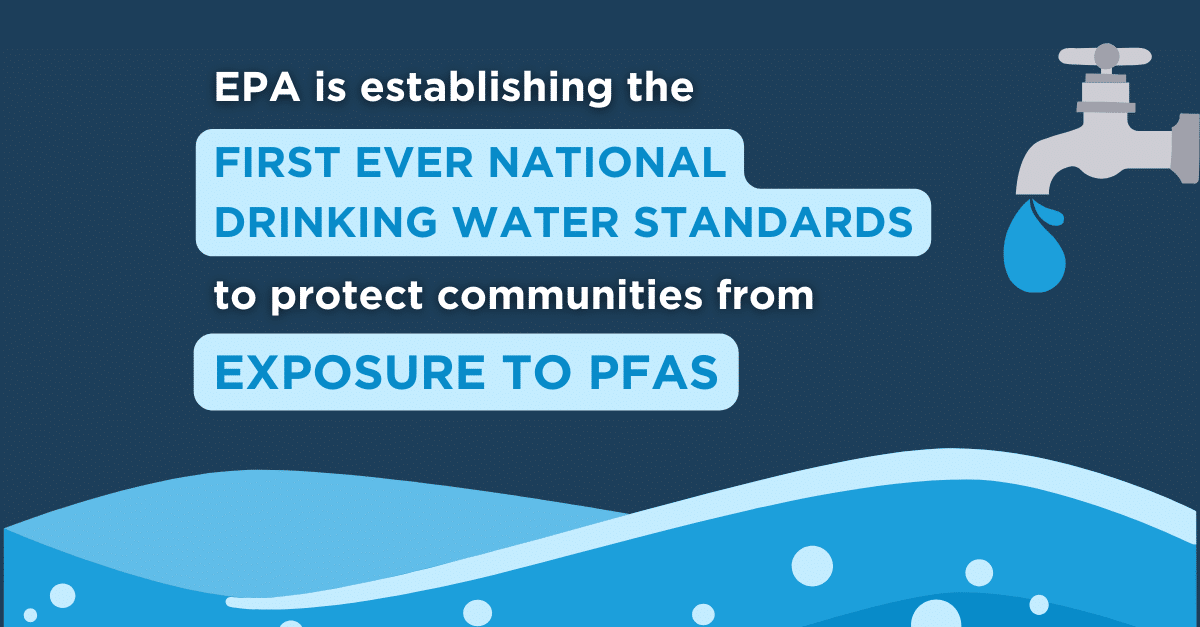April 18, 2024

Per- and polyfluoroalkyl substances (PFAS) are a group of man-made chemicals used in a variety of industries due to their resistance to heat, water, and oil. They are commonly found in products such as non-stick cookware, stain-resistant fabrics, firefighting foam, and food packaging. This class of chemicals have raised environmental and health concerns due to their persistence in the environment and potential adverse effects on human health. Learn more about PFAS.
First-Ever National Drinking Water Standard for PFAS
In this final rule issued on April 10, 2024, EPA is setting limits for five individual PFAS: PFOA, PFOS, PFNA, PFHxS, and HFPO-DA (known as GenX Chemicals). And EPA is also setting a Hazard Index level for two or more of four PFAS as a mixture: PFNA, PFHxS, HFPO-DA, and PFBS.
EPA included additional limits that were not part of the proposed rule and new details on implementation timing for water systems.
The Maximum Contaminant Levels (MCLs) are:
- PFOA – 4.0 parts per trillion (ppt)
- PFOS – 4.0 ppt
- GenX chemicals – 10 ppt
- PFNA – 10 ppt
- PFHxS – 10 ppt
Impacts for Water Systems
- Monitoring Requirements: The rules state that public water systems must complete initial monitoring for these PFAS chemicals within three years (by 2027) and inform the public of those results. If PFAS are found at levels that exceed the MCLs, then operators must implement solutions within five years (by 2029).
- Treatment: Drinking water utilities will be able to implement these new requirements as control technologies exist and are in use today such as granular activated carbon (GAC), reverse osmosis (RO), and ion exchange systems. Public water systems can choose from multiple proven treatment options.
- Funding: EPA is announcing nearly $1 billion in newly available funding through the Bipartisan Infrastructure Law (BIL) to help states implement PFAS testing and treatment of public water systems and private wells.
Read the press release for more information.
PFAS Litigation
PFAS-related litigation involves more than 4,000 cases, filed in federal courts across the country largely consolidated before a federal judge in Charleston, SC as a multidistrict litigation. An initial settlement estimated at up to $12.5 billion between 3M and many water utilities was reached in June in the South Carolina federal court. Numerous additional settlements are still under legal consideration and the number of settlements are expected to grow considerably, possibly exceeding the more than $200 billion paid by Big Tobacco in the 1990s.
Contact Us
The impacts of PFAS are far reaching. As drinking water system evaluation requirements grow, these efforts will support innovations and implemented solutions to deliver drinking water for communities for improved public health.
S&ME understands the technical and regulatory aspects of PFAS and intricacies of working with counties, municipalities, and water systems alike to evaluate and implement the most effective PFAS strategy. Read more.
For more information, please contact Vince Epps.
